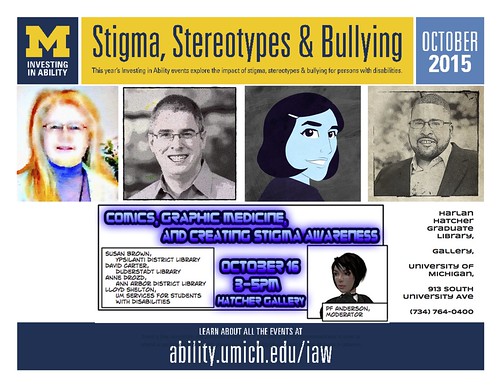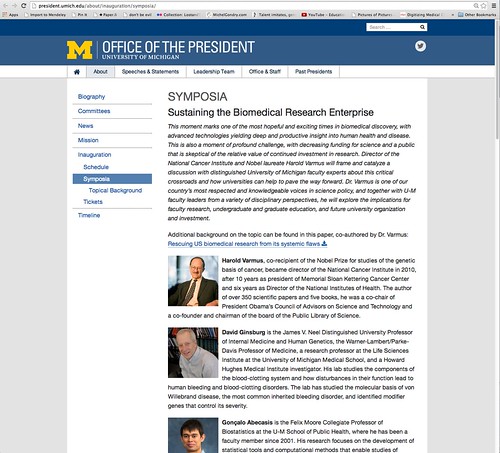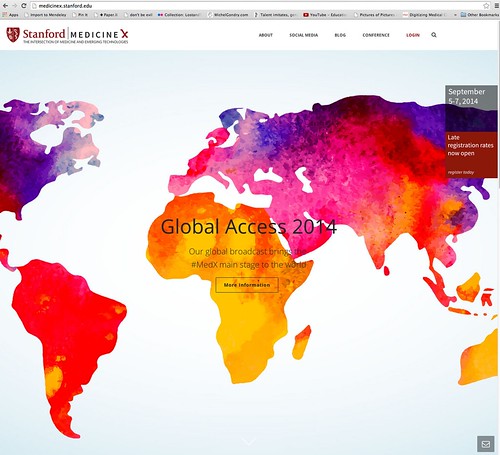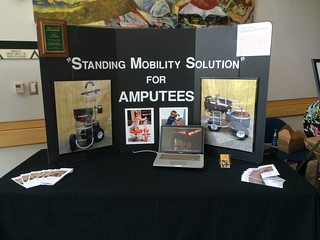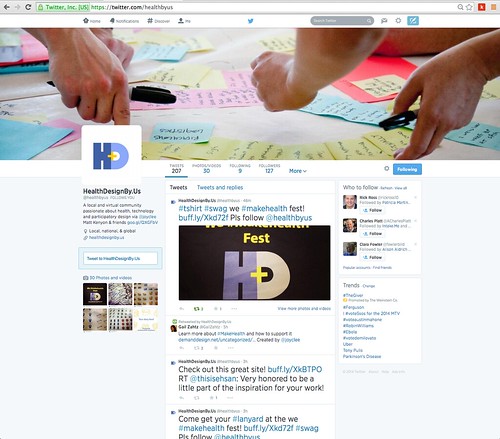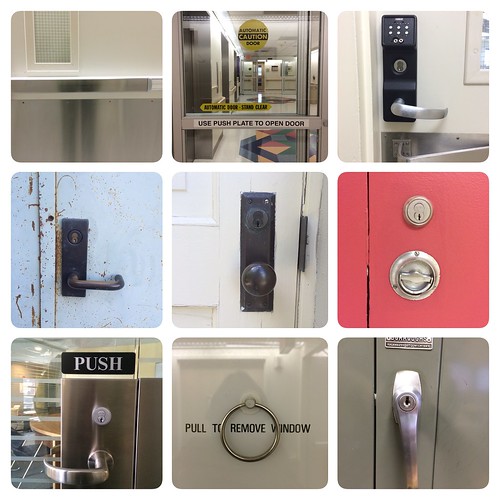The second day had fewer sessions (see the first day here), but they were so powerful and relevant to my work. They provided content I wanted to directly share with colleagues and implement back home. I highly recommend skimming through the tweets collected in the morning and afternoon Wakelets. There’s a ton of great stuff from the concurrent sessions I didn’t get to (like adapting content for voice searching, supporting your organizational leaders as they get into social media, social listening tools, deconstructing stigma in mental health, and so so much more).
Image credit by Chris Boyer: https://twitter.com/chrisboyer/status/1063079588882980864
(PS – in this pic, notice the socks. That’s worth a second blogpost, but Susannah and I both wear #pinksocks for a reason. More on that later. Or if you see me wearing pink socks, ask me about them.)
Social Media for Good
Susannah Fox is someone I’ve admired for a long time, and it was a pure delight to hear her keynote for MCSMN. This was especially true after so much as a focus the previous day on how to identify, prevent, and manage different kinds of problem scenarios in social media and communication. To hear Susannah focus on hope and growth and community was a perfect way to refocus on how we can use new and existing technologies to do good. Susannah generously shared core nuggets and references from her talk in a blogpost. As a librarian, I really appreciated her call to action in support of open access content in healthcare. There was a big response to her sharing an online tool / movement called Now Now Now (about it: http://sivers.org/nowff).
Susannah is an amazing storyteller, and had some good ones, full of heart and soul and kindness and caring. The one which spoke most to me was of a family caregiver trying to look out for a loved one in the hospital, who discovered a blogpost from someone else that gave critical information about how to advocate for them in a way that literally saved their life. There are a lot of amazing nuggets from Susannah’s talk. Here are just a few.
“When someone is diagnosed with a new disease, it can feel like being lost in a dark maze. Social media is a way to call out, is anyone else here?” #mcsmn pic.twitter.com/yiS8JdyL56
— P. F. Anderson (@pfanderson) November 15, 2018
“In times of crisis, we can borrow expertise, but we can also lend it. We can borrow courage, but we can also lend it.” @SusannahFox #mcsmn pic.twitter.com/jLtUeSzNaq
— jenn kearney (@jenndeavors) November 15, 2018
"Who is the person, the people who are always there for you in a crisis? Who is your Cajun Navy?" "The first responders are the neighbors" says @SusannahFox "And in healthcare, we are leaving half the team on the bench. We need whole community response" #mcsmn
— P. F. Anderson (@pfanderson) November 15, 2018
"Have no doubt in your mind. You saved your mom's life today." So when you ask yourself if what you post will make a difference, the answer is YES, it will. Someday. Sometime. For someone. @SusannahFox #mcsmn
— P. F. Anderson (@pfanderson) November 15, 2018
"DO WHATEVER YOU CAN TO FREE CONTENT FROM BEHIND A PAYWALL" @SusannahFox says it, but I put it in all caps, because, hey, LIBRARIAN & Patient advocate. This is important #mcsmn
— P. F. Anderson (@pfanderson) November 15, 2018
Smart advice from @SusannahFox "Curate your social media feed to lift you up not bring you down" #MCSMN
— Rachel Haviland,Ph.D (@rachelhaviland) November 15, 2018
"Clinicians don't scale. Peers scale." > Why I trained grandmothers to treat depression https://t.co/nkrkmmCgEX #mcsmn
— P. F. Anderson (@pfanderson) November 15, 2018
@SusannahFox impact statement is inspirational. “Was the work useful, soul-enriching, was it on my mission path, did it have a positive impact on the world, another organization, on a person, or on myself? Would I seek to do something similar in the future?” @MaggieStrong #MCSMN
— Lucy Bordewick (@LucyBordewick) November 15, 2018
Ikigai
Matthew Rehrl, MD started his talk about ikigai with the 1918 pandemic. Ikigai is an old Japanese concept, Iki = life; kai = shell (which was the currency of the time, thus equating to VALUE). He went on to use a number of examples building up the audience’s skills around how to look at actions and events and choices to extract a sense of where to find passion and purpose. That’s one petal of the ikigai four-leaf flower. He reframed it as, what’s the reason you get up in the morning?
Thx for teaching us about #ikigai at #MCSMN @MatthewRehrl I think we are all seeking life balance. How do we get that in #socialmedia? pic.twitter.com/ebXtfZvxdh
— Hive Strategies (@HiveDan) November 15, 2018
The basic concept is framed with what you love, what you’re good at, where is there a need, and what generates value. It’s not static, it grows and changes as you do. This is true for both individuals and organizations. Matthew asked, “What is your organization’s passion?”
#ikigai is a combination of four things: what you love to do, what you have the ability to do, what the world needs and what the world will pay you to do. #MCSMN
— Chris Boyer (@chrisboyer) November 15, 2018
I spent a lot of time thinking about how Jane Blumenthal, our recently retired library director, helped each person in our library craft a job position that allowed us to shine, building from our strengths and interests to create a position that connects with the needs and purpose of the larger organization. What a gift. She built ikigai in and with the library.
Permission to Fail
Jacob Weiss, Ph.D. of Do Good and Juggle presented a surprising and engaging interactive hands on keynote where he literally taught the audience how to juggle. But the real underlying concept, the take home point, was that to make progress you need to allow yourself to fail and keep trying, and that failing together and trying together changes how you experience failure. An important lesson. It didn’t hurt that he used lots of exciting visuals to get the point across. [Please note that WordPress is not displaying the tweets properly, and that you’ll have to click through to see the images and videos.]
“Laughter is the shortest distance between two people” #MCSMN
— Jessica Lewis (@JessLewis422) November 15, 2018
Thankful for the reminder to lean into a growth/beginner's mindset, in all ways. Turn your next "I can't do it" to "I can't do it…YET" and see what happens…#MCSMN
— Jess Columbo (@JessColumbo) November 15, 2018
"Don't compare your behind-the-scenes to someone else's highlights reel!" #mcsmn
— P. F. Anderson (@pfanderson) November 15, 2018
Try. Drop. Try. Drop. Try. Drop. Succeed! (Sort of) @huntsmancancer #MCSMN #WannaJuggle @dogoodandjuggle https://t.co/Yuj5ypJHCp
— Meredith Vehar, MPA (@mvehar) November 15, 2018
Poi ball juggling #mcsmn pic.twitter.com/ZPIq8SwyHY
— P. F. Anderson (@pfanderson) November 15, 2018
Stories to Build Trust
“Transforming Medical Education and Clinical Practice to Give Voice to Vulnerable Populations, LGTBQ, and Homeless Persons” by Katherine Y Brown, Ed.D. was a powerhouse presentation that several folk said should have been one of the keynotes. It blew my mind. Just a gold mine of insight and best practices for building trust and making change in the health of a marginalized community. Katherine went directly to transgender persons in the community, brought them to the table, and collaborated with them on getting the messages to the medical faculty and students that would change medical education around transgender issues. She captured videos of real person’s experiences and challenges, and made videos with what could and should happen. The curriculum was changed. In one year. This is powerful stuff.
You can’t have power over powerless people. Bring all the stakeholders to the table w/ conferences, meetings and more. Share the power. @KatherineYBrown #mcsmn #LGBTQ
— Hive Strategies (@HiveDan) November 15, 2018
"Did you ask their pronouns? Did you ask their pronouns EVERY VISIT? Because my pronouns might change. You don't define me. I define me." #lgbtq #mcsmn
— P. F. Anderson (@pfanderson) November 15, 2018
"You don't hear doctors say, oh I want to find out if he's Christian; I need to find out if he's molested kids before; if he's been molested. You don't ask." #mcsmn
— P. F. Anderson (@pfanderson) November 15, 2018
"So did you get PREP?" "No, I did not get PREP until I get here. The doctor's wouldn't talk about it." "Two years. Two years you couldn't get PREP because of a provider. Who wouldn't share widely available information" @KatherineYBrown #mcsmn
— P. F. Anderson (@pfanderson) November 15, 2018
It's important for providers to hear the voices of real patients. "What does it mean to transition?" "Some people aren't able to access hormone therapy. I can't get treatment because I'm HIV positive" #mcsmn
— P. F. Anderson (@pfanderson) November 15, 2018
"The big stigma put on trans women now is that all trans woman are prostitutes. All trans women are boosters. … We're not. … I try to just be myself. Being trans is so hard. It's hard to be in a relationship" #mcsmn
— P. F. Anderson (@pfanderson) November 15, 2018
"I don't think providers understand that people are coming for care, but they've been hurt. They suffer abuse. They may have trust issues." @KatherineYBrown #mcsmn
— P. F. Anderson (@pfanderson) November 15, 2018
Q: What was the challenge in getting people to come tell their stories? A: "The challenge was TRUST. I just told them I want to hear your voice because your voice will make a difference." #mcsmn
— P. F. Anderson (@pfanderson) November 15, 2018
https://platform.twitter.com/widgets.js
More!
There was a lot more, but I’ll have to save some of that for another time. They have the slides up online now, so maybe I can go into some of the individual presentations in more detail. In the meantime, here’s the slides for more to explore!


